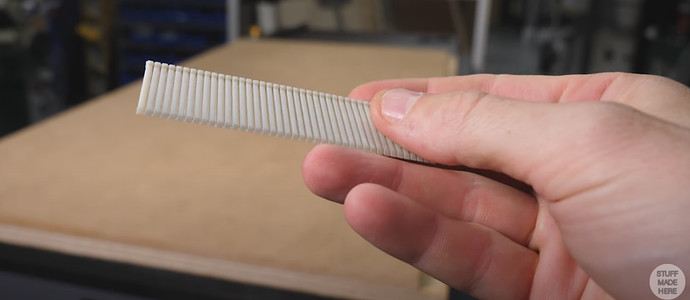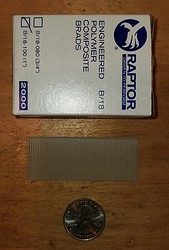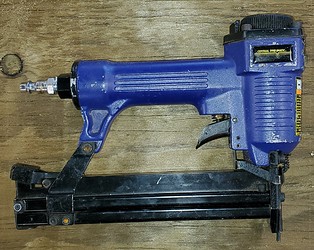Watching Stuff Made Here YT video - first time I’ve seen this, seems like a really great idea
I mentioned these a while back in the Advice for initial work holding strategy topic.
At that time it didn’t seem anyone here had first-hand experience with them, but my reading had shown that unless you use the proprietary driver they work for a while and then risk gumming up a “normal” brad nailer.
I have use them on my maiden voyage at a Maker space I was using for the use of their larger planer and bandsaw.
I walked past the massive ShopBot they had each day and finally was pulled in. You had to take a 3 hour introduction which was safety as well as small profit maker. Anyway I jumped in and learned Fusion 360 for CAD and CAM and made a parametric model for a flat back stool.
Was so excited and finally proceeded to cut my first (and only) ShopBot project and it went GREAT! I was hooked.
Unknown to me exactly during the job run the governor of Illinois announced a TOTAL lockdown of the state due to Covid. Not was the very large business closed they basically went under an sold off everything. He was actually thinking of retiring the business but this mad it happen much faster.
So…back to your question. He hade a dedicate normal Porter Cable air nailer with those plastic nails. It was used every day and worked great. I am sure it would need some cleaning on occasion but that’s pretty simple even the the normal nails.
Also the first CAM operation was to make a small counter bore on the lose sheet and pause the spindle then use the plastic nails and start the job.
Final CAM was to bore down to the spoil board at the pre-bored nail points thus freeing the work and keeping the spoilboard somewhat smooth. A simple tap of a hammer if any were not flush.
I ended up building a Primo and went the route on kind of an overkill spoil board that I Vee grooved a 100mm grid and shot 1/4-20" inserts at each intersection and just use scrape wood straps hold downs.
Also for smaller jobs I just double side tape it.
Last tip was he had a dedicated palm router in a holder that had 1/4" cutter with a ball bearing on it. You used it to very quickly run it though the outline where ever your hold down tabs are to easily and cleanly released the work.
-craig
I saw that video and was very excited about those, until I saw the price of the nailer. 
Based on your question, I decided to give some composite nails a try. I purchased some from Duckworks Boat Builder’s Supply since their price ($20) was similar to other places on the net, and, because they are in my same shipping zone, USPS shipping was only $4.
I used an unmodified, inexpensive Harbor Freight nailer. They no longer sell this specific nailer. Based on things I read on the net I used the around 90 psi. I found that I could not load a full 50 nails at at time since the spring would cause the nails to fold up and split, but 1/3 of a sheet (around 17) loaded fine.
I tried various scrap woods. Cedar 5/8" thick and pine 3/4" thick worked fine with 100% of the nails going through the wood and into the MDF below. Plywood 3/4" and Douglass Fir 1/2" thick were difficult with only maybe 30% of the nails passing through. Increasing the compressor pressure to 120 psi decreased the number of nails that passed through these more difficult woods. Plywood 3mm, plywood 5mm, and two sheets of 5mm plywood (10mm) all worked with 100% of the nails passing through.
The nailer did jam after around 100 nails during nailing the difficult woods. It was an easy job using a hex wrench to clear the jam. It is likely trying to push the nailer through the harder woods were responsible for the jam.
I think these nails are a viable hold-down option for softer woods up to 5/8" thick, or plywood up to 3/8" thick. In softer woods, the nailing leaves a significant mark on the wood, so nailing should be done on the waste portion of the stock. I don’t think (at least with this nailer) that composite nails will work with harder or thicker wood.
Awesome, thanks for testing that out. I think I will have to give it a shot now.
I see what you did
I know this is a late response, but I started using nylon 1/4-20 bolts to hold down stock. Already goofed up my origin on one piece and cut right through one with no damage to bit or machine.


